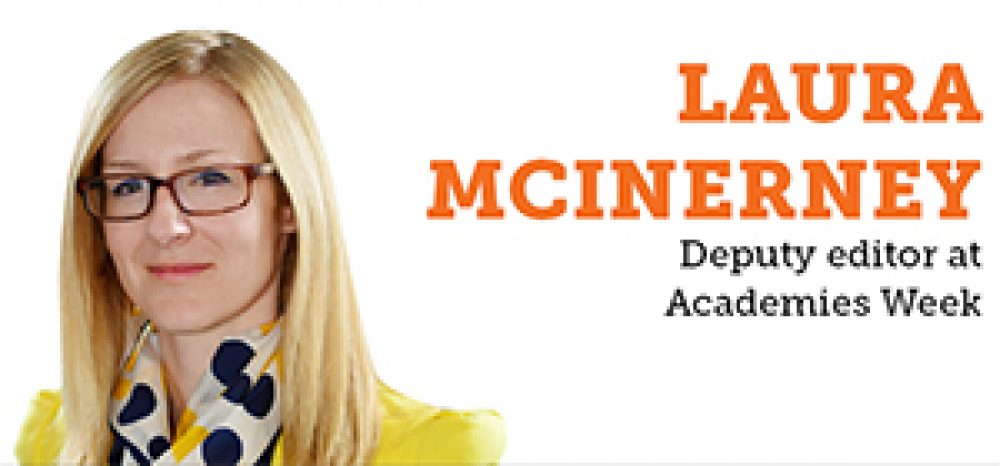Today the National Audit Office (NAO) released a document scrutinising the way schools are overseen and intervened on if under-performing.
Reading it is illuminating. Academies have been complicated to keep abreast of over the last few years, and it does a good job of explaining who is responsible for what (so far as there actually is anyone) and of explaining which bits are working – and which aren’t. (NB: there are more of the latter).
Headlines will likely tout the £382m spent on oversight and the lack of evidence about what it’s being spent on. By contrast the Coalition will trumpet the good news: Academies are now much cheaper (by 83%) and there are more of them.
If you read the full report however (and you should) there are some more finicky but important lessons. Here’s the top ones.
1) There are 7 million children in the school system. 2.4 million of them in academies. Academies are less than 20% of England’s schools but educate over a third of pupils, because more academies are secondary schools – and those have more pupils.
2) Currently, 460 ‘sponsors’ work with over 1,900 academies. This means 460 non-profit groups have ‘taken over’ under-performing schools.
3) When things go wrong in a school, the DfE or local authority (LA) can do a ‘Formal intervention’. These include sending warning notices, changing a school’s governing body, or appointing a sponsor (i.e. making the school an academy). A sponsor can also be changed if necessary – though the process is hellish
4) No single document exists outlining the roles and responsibilities for school oversight. There is supposed to be one. A document called the ‘accountability system statement’ was first written in 2012 but was unclear, and so was planned to be updated each year. It wasn’t updated in 2013. In June, the DfE said it would update it soon. It still hasn’t been done.
The report then considered the effectiveness of ‘formal intervention’ in under-performing schools:
5) Only 48% of under-performing schools that had formal intervention improved their performance. That’s despite a ton of cash, will and time pumping into them. Bit dispiriting really.
6) Even worse, 59% of schools that did not receive any intervention nevertheless did turn around. On the face of it, doing nothing therefore appears to be better than intervening. But the report dutifully points out that schools without intervention usually didn’t receive any because they had sourced help from elsewhere – eg from another local school – so it’s not fair to say there was no intervention. There was just no formal intervention.
7) Not all inadequate schools were made to become academies, or turned around. A year after first becoming inadequate, 10% of schools were still inadequate and still overseen by the local authority. Hence, it seems acdaemisation is inconsistently applied to schools. This is also true of warning notices and governing body changes. The NAO seems gravely concerned throughout the report that there is no clarity in when interventions happen or why.
8) The Department does not know the cost of different interventions. At least £382million has been spent on oversight but the NAO couldn’t get a clear idea of what it was spent on.
9) The Department does not routinely collect information on what academy sponsors do to help schools improve. This is worrying. Schools are tied into contracts with these sponsors. They can’t get out of them. Money could be pouring in and we have no idea what schools are getting for it.
10) Ofsted don’t provide a “rating or judgement” grade for academy trusts – but the report misses out the fact that the DfE already give them a grade, it’s just kept secret from the public. The DfE has long kept grades on sponsors which describes their quality. Back in April I asked them to release the grades to the public. Or even just release what the grades are based on. They won’t. (They argue sponsors will stop being truthful if they do. No, really).
11) All the changes in curriculum and measurement mean there’s not going to be any clear way of knowing if interventions are improving the system. Shifting to Progress 8, the change in GCSEs, increases in ‘rigour’, etc, all add noise and will mean there’s no way to credibly compare results from one year to the next. Even if information is gathered, it’s unlikely we’re ever going to be able to really say what the impact of academisation has been. (The cynic might think this rather convenient).
Finally, there appeared to be problems with flagging up risks and knowing who is in charge of safeguarding:
12) 15% of schools have not had an Ofsted in the last four years. This includes three which were not ‘good’ or ‘outstanding’. This wouldn’t be so worrying but the report points out that the DfE doesn’t currently have good systems for flagging risks that might not show up in exam data – for example, the sort of ‘extremist’ activity seen in some of the Birmingham ‘Trojan Horse’ schools
13) No one really knows who is responsible for safeguarding or checking the suitability of school governors. Local authorities remain responsible ‘on paper’ for all schools but in actuality they are often frozen out, and their powers to do anything have been reduced to the extent that it is quite hard to hold them accountable.
In response to these problems the NAO recommends a number of things: data collection points, transparency, clearer lines of accountability, etc. It’s not anything that hasn’t been said a hundred times in the last few years – but it is the first time someone has said it so clearly. Maybe this time, those in power will listen.
Laura McInerney is the Editor of Schools Week (formerly Academies Week)







I think it is a very worrying situation and clearly open to abuse.
It’s interesting that academy sponsors are protected by keeping ratings secret while schools and LEAs are exposed to crude “tabloidisation”.